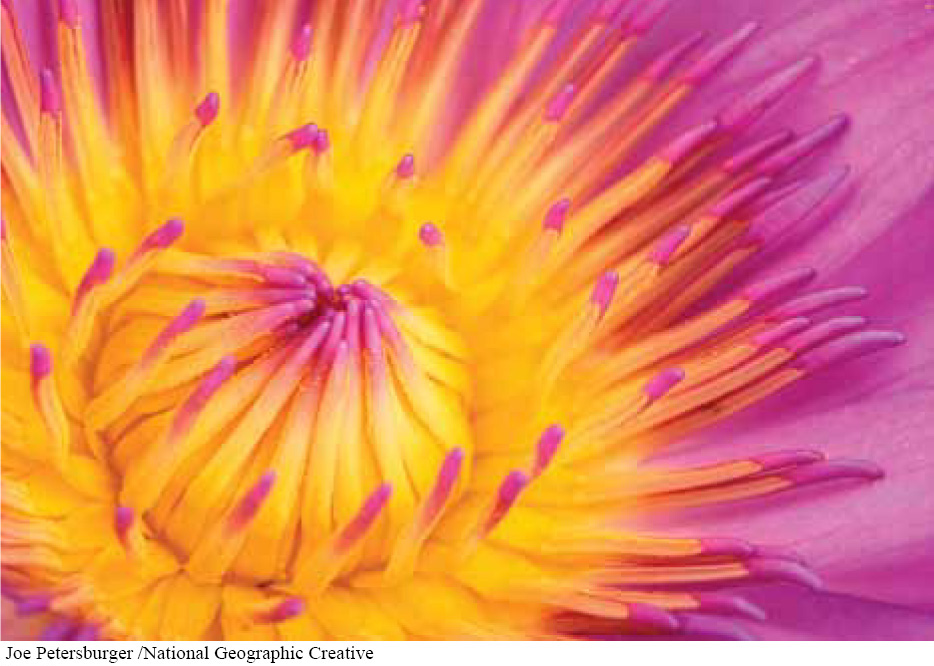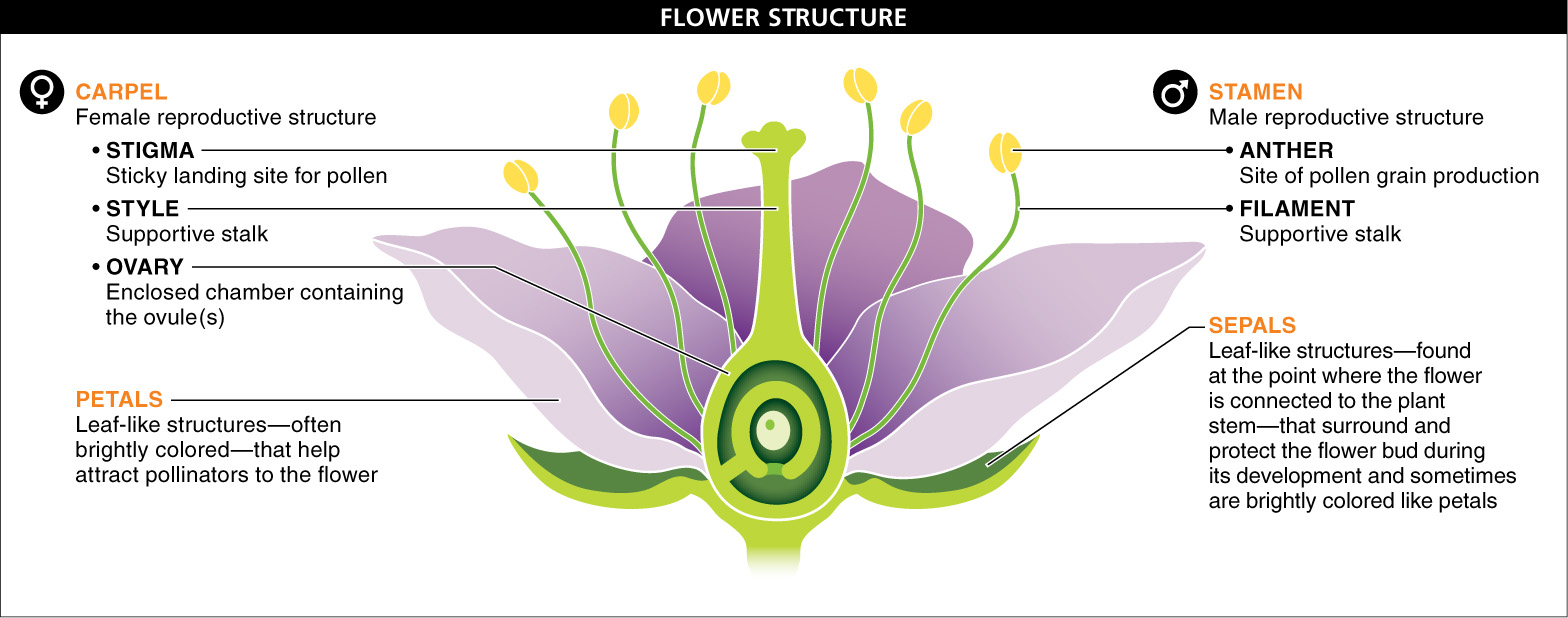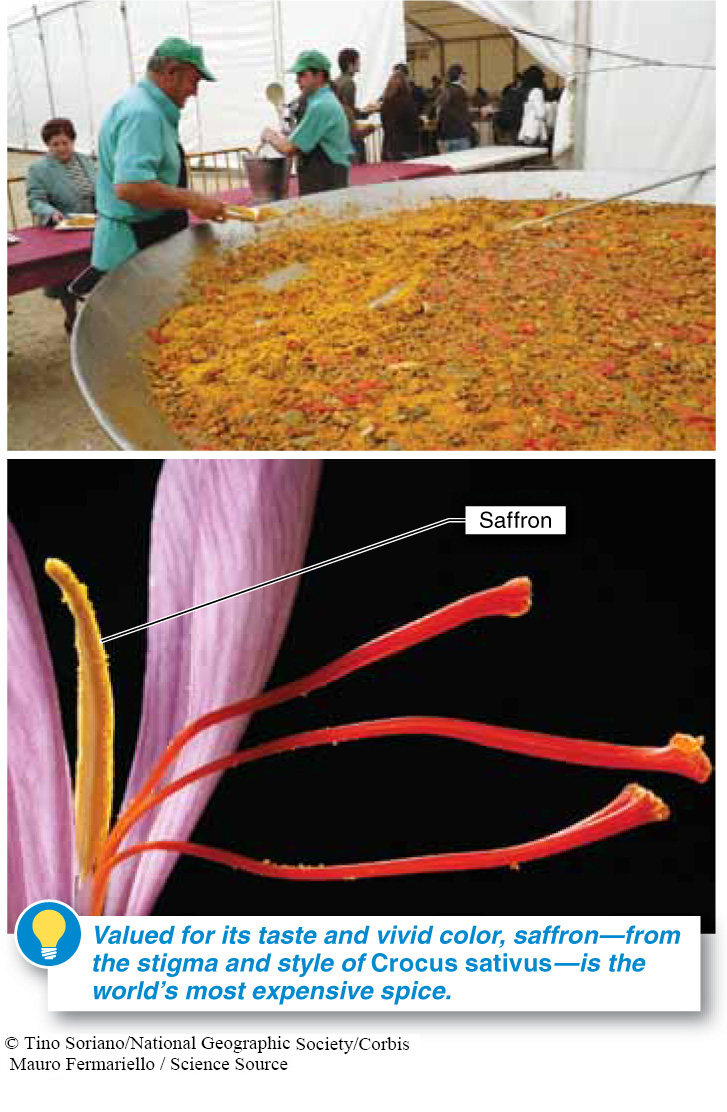
Take a look at FIGURE 18-8, which showcases the diversity of flower shapes and colors. If we investigated more closely, though, and dissected some flowers, we’d see that with only a few exceptions, all flowers have the same fundamental structures. The consistency we find there brings order to the seemingly infinite array of flower forms.

Specifically, flowers have four distinct parts (FIGURE 18-9).

1. Sepals. These leaf-
2. Petals. Just inside the ring of sepals is another ring of leaf-
734

3. Stamens. Moving inward toward the center of the flower, the next structures are the stamens, the male reproductive parts. There are usually several stamens, each of which appears like a head on top of a long, thin stalk. The stalk is called the filament and the head-
4. Carpel. In the very center of the flower is the carpel, the female reproductive structure. There is usually only one carpel, and it is usually shaped like a long-
The prize for the most valuable stigma probably goes to Crocus sativus, a flowering plant native to Southwest Asia that is more commonly known as the saffron crocus (FIGURE 18-10). Collected and dried, the stigma and style produce a deep yellow powder, valued by food lovers for its taste, sometimes described as slightly bitter and earthy. Common in Persian and Indian dishes, saffron is the world’s most valuable spice: a pound (requiring the stigma and style from about 75,000 flowers) sells for more than $2,000.
735
Not all flowers have all four structures described above. We’ll see later in this chapter that some plants produce flowers that have only male or only female reproductive parts. Still others may lack sepals or petals.
TAKE-HOME MESSAGE 18.4
Flowers are plant structures specialized for sexual reproduction. Most flowers have the same fundamental structures: sepals, petals, stamens, and a carpel.
Identify and briefly describe the four fundamental structures of all flowers.
These are the sepals, petals, stamens, and carpel. Sepals are leaf-like structures, located at the point where the flower is connected to a main support structure of the plant (such as a branch, stem, or stalk). Petals are also leaf-like structures and are just inside the ring of sepals. They often are brightly colored—helping the flower to attract pollinators—and frequently have distinct shapes, from long and thin to short and broad. The stamens, which are found toward the center of the flower, are the male reproductive parts. There usually are several stamens, each of which appears like a head on top of a long, thin stalk. In the very center of the flower is the carpel, the female reproductive structure. There typically is only one carpel, and it is shaped something like a long-necked vase. At the very top of the carpel is a flat, sticky surface called the stigma, which functions as a landing pad for pollen.